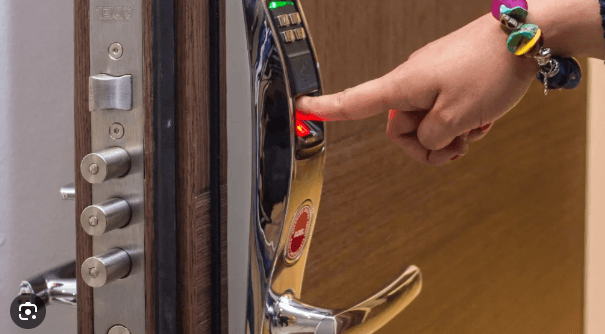If you’re a homeowner, you’ve probably encountered the frustrating issue of a clogged drain. Whether it’s in the kitchen sink, bathroom shower, or bathtub, clogs can disrupt the flow of your daily routine and cause unnecessary stress. While there are numerous drain cleaning methods available, one highly effective and eco-friendly option is the drain cleaning bladder.
What is a Drain Cleaning Bladder?
A drain cleaning bladder, also known as an inflatable drain cleaner, is a versatile tool designed to remove stubborn clogs from pipes and drains. It is typically made of durable rubber or other flexible materials and comes in various sizes to fit different drain openings.
How Does a Drain Cleaning Bladder Work?
The drain cleaning bladder works on a simple yet ingenious principle. When deflated, the bladder can easily be inserted into the clogged drain. Once in place, it is inflated using either a manual pump or a water source, like a garden hose. As the bladder inflates, it exerts pressure on the clog, dislodging it and restoring the proper flow of water.
Advantages of Using a Drain Cleaning Bladder
- Effective Clog Removal: Drain cleaning bladders are highly effective in removing tough clogs, including grease, hair, soap scum, and other debris.
- Chemical-Free Solution: Unlike traditional chemical drain cleaners, a drain cleaning bladder does not rely on harsh chemicals, making it an eco-friendly option.
- Cost-Effective: Investing in a drain cleaning bladder can save you money on expensive plumbing services for minor clogs.
- Versatility: Drain cleaning bladders can be used on various types of drains, including sinks, toilets, showers, and bathtubs.
- Quick and Easy: With the right technique, using a drain cleaning bladder is a quick and hassle-free process.
Choosing the Right Drain Cleaning Bladder
Selecting the right drain cleaning bladder is essential to ensure efficient clog removal without causing any damage to your plumbing. Consider the following factors when choosing a bladder:
- Size: Choose a bladder size that fits snugly into the drain opening to create a proper seal.
- Material: Opt for a bladder made of high-quality and durable material to withstand pressure during use.
- Compatibility: Ensure that the bladder is suitable for the type of drain and pipes you have.
- User-Friendly: Look for a bladder with easy-to-follow instructions for seamless operation.
- Safety Features: Check for safety features such as pressure release valves to prevent over-inflation.
Step-by-Step Guide on Using a Drain Cleaning Bladder
Follow these steps to effectively use a drain cleaning bladder:
- Preparing for the Task: Gather all the necessary tools, including the drain cleaning bladder, gloves, and safety goggles.
- Inserting the Bladder into the Drain: Deflate the bladder and insert it into the drain until it reaches the clog.
- Inflating the Bladder: Use a manual pump or connect the bladder to a water source and gradually inflate it until you feel resistance.
- Clearing the Clog: The pressure from the inflated bladder will dislodge the clog. Keep the bladder inflated for a few seconds to ensure the clog is completely removed.
- Removing the Bladder: Gently deflate the bladder and remove it from the drain.
Safety Measures While Using a Drain Cleaning Bladder
When using a drain cleaning bladder, safety should be a top priority. Follow these safety measures:
- Protective Gear: Wear gloves and safety goggles to shield yourself from any potential splashes or debris.
- Handling Chemicals: If you use any chemical cleaner before attempting to use the bladder, read and follow the instructions carefully. Avoid mixing different chemicals.
- Disposal of Waste: Properly dispose of any waste material removed by the bladder to prevent environmental contamination.
Common Mistakes to Avoid
While drain cleaning bladders are effective, some common mistakes can hinder their performance:
- Over-Inflation: Avoid over-inflating the bladder, as it may cause damage to the pipes.
- Incorrect Size: Using a bladder that is too small or too large for the drain can result in an ineffective seal.
- Ignoring Safety Precautions: Always prioritize safety and wear appropriate protective gear.
- Ignoring Underlying Issues: If clogs persist despite using a bladder, there may be underlying plumbing issues that require professional attention.
Maintaining Your Drain and Preventing Clogs
To reduce the likelihood of clogs and the need for frequent drain cleaning, consider the following maintenance tips:
- Regular Cleaning: Clean your drains regularly using natural solutions like baking soda and vinegar to prevent buildup.
- Avoiding Foreign Objects: Keep foreign objects, such as hair, food scraps, and hygiene products, out of drains to minimize clogs.
- Professional Inspections: Schedule periodic inspections by a professional plumber to detect and address potential issues.
Eco-Friendly Alternatives to Chemical Drain Cleaners
While chemical drain cleaners are popular, they can be harmful to the environment and your plumbing over time. Consider these eco-friendly alternatives:
- Baking Soda and Vinegar: A mixture of baking soda and vinegar can effectively break down clogs without harming the environment.
- Enzyme Cleaners: Enzyme-based cleaners use natural bacteria to break down organic matter in drains.
- Manual Snakes: A plumbing snake can be used to physically remove clogs without the need for chemicals.
DIY vs. Professional Drain Cleaning
Minor clogs can often be resolved using DIY methods like a drain cleaning bladder. However, for more persistent or complex clogs, it’s best to seek professional assistance. Professional plumbers have the expertise and specialized tools to address





